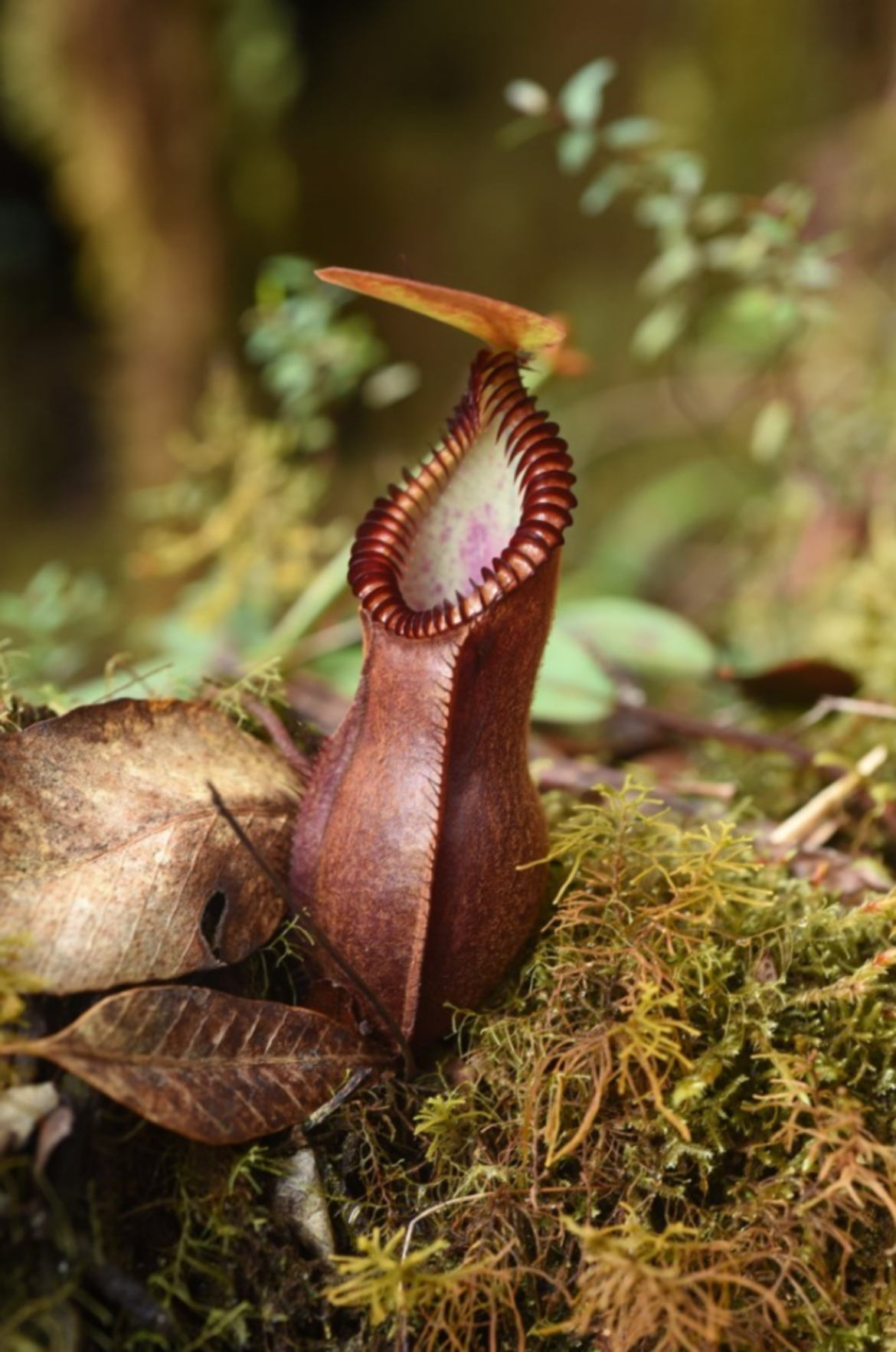Nepenthes diabolica, a new species of tropical pitcher plant, is described and illustrated
Nepenthes diabolica, a new species of tropical pitcher plant from Central Sulawesi, is described and illustrated. It has been recently discovered by an international research team led by the MUSE - Science museum of Trento

First photographed in 2004 on an Indonesian mountain ridge, the plant was formally described and recognised by the international scientific community only a few days ago. A research team including Andrea Bianchi, botanist and head of the MUSE tropical greenhouses, has discovered that it is a new species.
Its description was published only a few days ago, but Nepenthes diabolica, the carnivorous plant discovered on a mountain ridge in central Sulawesi, Indonesia, gets itself talked about.
Photographed for the first time in 2004 by Chien Lee, an internationally renowned naturalist photographer, the new species was later observed and studied only in 2016 during an international botanical expedition. The MUSE - Science Museum of Trento was the leader of the expedition, and went to the heart of the Indonesian forest for identification.
"Since I had the chance to see it in the wild, it has taken four years to formally describe it," says Andrea Bianchi, head of the MUSE tropical greenhouses and the only Italian member of the team. Besides Bianchi, Lee himself is part of the research, as well as researchers Golos, Mey, Mansur, Mambrasar and Robinson.
"The specific epithet diabolical refers to the remarkable peristoma of the traps (the 'toothed' edge), which carries large flanges ending in sharp teeth, and its woolly, reddish coloured traps, which make it resemble a small devil. It is hypothesized that this particular structure facilitates the capture of particularly large prey such as cockroaches and spiders", says Bianchi.
Nepenthes diabolica is a member of section Tentaculatae, showing morphological affinities with Nepenthes hamata. Nevertheless, the two species can be distinguished by morphological characters as well as by ecology and geography. A diagnostic key to the species of section Tentaculatae is provided. Owing to its highly restricted range, small number of recorded individuals, and desirability among plant collectors, the conservation status of N. diabolica is assessed as Critically Endangered under the IUCN criteria.
Local authorities wish to stem this biopiracy problem, and hopefully the description of this new species will make it possible to establish a new protected area, which would also host new species of orchids, which we hope to describe soon," explains the research co-author, as he shows us the Nepenthes hamata (further information here ) - the Nepenthes diabolica's sister species - kept in the MUSE propagation greenhouse.
28/10/2020

